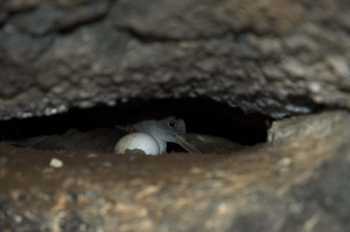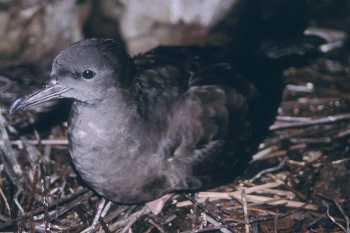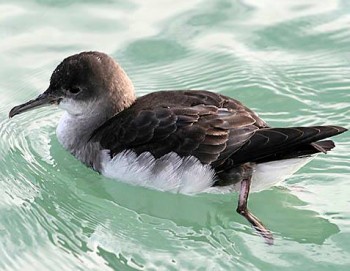Vitor Paiva (MARE - Marine and Environmental Sciences Centre, University of Coimbra, Portugal) and colleagues have published in the on-line, open-access journal PloS ONE on at-sea tracking and trophic analysis of Cape Verde Shearwaters Calonectris edwardsii.
The paper’s abstract follows:
“Large Marine Ecosystems such as the Canary Current system off West Africa sustains high abundance of small pelagic prey, which attracts marine predators. Seabirds are top predators often used as biodiversity surrogates and sentinel species of the marine ecosystem health, thus frequently informing marine conservation planning. This study presents the first data on the spatial (GPS-loggers) and trophic (stable isotope analysis) ecology of a tropical seabird — the endangered Cape Verde shearwater Calonectris edwardsii – during both the incubation and the chick-rearing periods of two consecutive years. This information was related with marine environmental predictors (species distribution models), existent areas of conservation concern for seabirds (i.e. marine Important Bird Areas; marine IBAs) and threats to the marine environment in the West African areas heavily used by the shearwaters. There was an apparent inter-annual consistency on the spatial, foraging and trophic ecology of Cape Verde shearwater, but a strong alteration on the foraging strategies of adult breeders among breeding phases (i.e. from incubation to chick-rearing). During incubation, birds mostly targeted a discrete region off West Africa, known by its enhanced productivity profile and thus also highly exploited by international industrial fishery fleets. When chick-rearing, adults exploited the comparatively less productive tropical environment within the islands of Cape Verde, at relatively close distance from their breeding colony. The species enlarged its trophic niche and increased the trophic level of their prey from incubation to chick-rearing, likely to provision their chicks with a more diversified and better quality diet. There was a high overlap between the Cape Verde shearwaters foraging areas with those of European shearwater species that overwinter in this area and known areas of megafauna bycatch off West Africa, but very little overlap with existing Marine Important Bird Areas. Further investigation on the potential nefarious effects of fisheries on seabird communities exploiting the Canary Current system off West Africa is needed. Such negative effects could be alleviated or even dissipated if the ‘fisheries-conservation hotspots’ identified for the region, would be legislated as Marine Protected Areas.”

Cape Verde Shearwater on its egg, photograph by Jacob Gonzalez-Solis
Reference:
Paiva, V.H., Geraldes, P., Rodrigues, I., Melo, T., Melo, J. & Ramos, J.A. 2015. The foraging ecology of the endangered Cape Verde shearwater, a sentinel species for marine conservation off West Africa. PloS ONE DOI: 10.1371/journal.pone.0139390.
John Cooper, ACAP Information Officer, 14 October 2015


 English
English  Français
Français  Español
Español 

